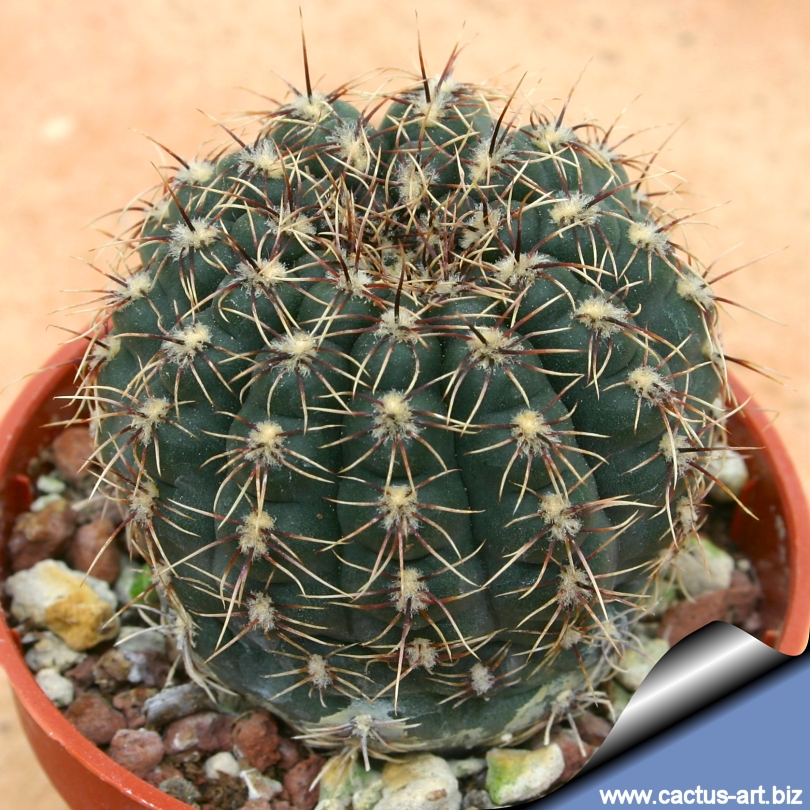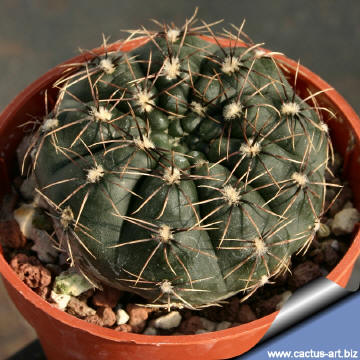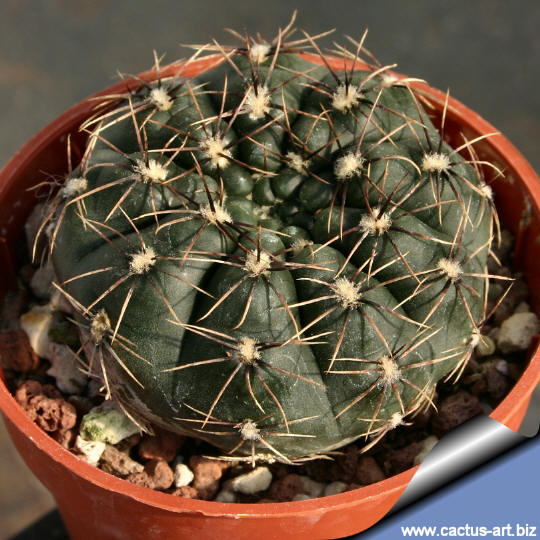|
|
|

Gymnocalycium erinaceum STO 90-352/2 El Sauce to Rio Pinto, Cordoba,
Argentina
(Collector: Helmut Amerhause, Franz Strigl and Hans Till)
Small shiny stem with
short brow spines that fade cream-white near the end, It makes for a
very handsome appearance. The flowers are white with reddish
throat
|
|
 |
Description: Small
species with solitary or clustering stems, it may clusters when small.
This slow-growing plant will eventually form clusters up to 15 cm
across.
Stem: Globose-Flattened dark.
green to brownish green glaucous, up to 5 tall and in diameter.
Ribs: About 12.
Areoles: Rounded to elongated with short cream-white wool.
Spines: Short, thin, dense, spider-like, slightly curved which
are dark brown as they leave the grey-white areole, and then fade near
the end to the same colour as the areole wool.
Central spines: 1-2 up to 10 mm long.
Radial spines: 7-9, straight, one pointed downward, others in
pairs pointed to the sides, 6-8 mm long.
Flowers: Bell to funnel-shaped, pure white or white whit a
reddish throat, diameter approx 5 cm.
Blooming season: Spring.
Fruit: Spindle shaped, green/bluish up to1,5 cm long and 1,2 cm
wide. |
|
Advertising
|
|
|
|
|
Family:
Cactaceae (Cactus
Family)
Scientific name:
Gymnocalycium
erinaceum J.G.Lambert 1985
Origin: Córdoba (
Sierra de Tulumba, Sauce Punco) , Argentina, South America.
Conservation status: Listed in
CITES appendix 2.

|
|
|
|
Cultivation: Gymnocalycium
erinaceum is one of the most cold-tolerant South
American species. It
can grow outdoors and is hardy to -12° C or less.
Prefer a
low pH
compost; otherwise
growth will stop altogether. The plant tolerates
extremely bright situations but enjoys
some shade during the hottest part of the day in summer.
Water regularly in summer, keep rather dry in winter
Propagation: Seeds, offsets
|


|
|